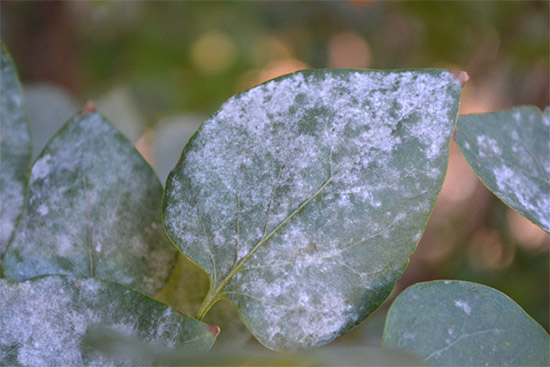Issue 12, July 30, 2018
Weather is Conducive for Powdery Mildew
Based on the weather that we have had this past July, powdery mildew will be seen in more than just a handful of places. The six common genera of powdery mildew fungi in the Midwest all prefer warm, humid days. The spores germinate on foliage when the relative humidity is 23% to 99% but not in a free moisture (rain). Powdery mildew is a common fungal disease problem on many perennials as well as annuals, shrubs, turf and even trees. One plant can spread the disease very quickly especially in humid weather. Even though this disease can spread quickly over a plant, it doesn't normally kill one.
Symptoms of powdery mildew is a white or dusty grey patches on the leaves, shoots, buds, flowers or stems. This mildew is composed of threadlike mycelium and asexual spores of fungus. Powdery mildew fungi over winter on plant tissue and dormant buds. The spores are released in the spring damp weather and move to uninfected tissue in water or wind. In some cases the growth is superficial and in other cases the leaves become distorted dwarfed and discolored. The severity of the symptoms depends on the host species, age of the tissue infected, environmental conditions and the fungus involved. New growth on plants is more sensitive than older leaves.

Powdery mildew on common lilac.
Managing powdery mildew infections, can be done by several means. It is important to provide conditions for adequate air flow. Pruning and thinning stands of plants, or branches will allow for better air movement. Watering in the morning or early part of the day to promote rapid drying will also help. Resistant varieties are the first means of disease control but unfortunately are not always available. Fungicides are also available and should be utilized at the first sign of the disease. Once the disease has become widespread, it cannot be controlled in that year.
Finally in the fall when cleaning up plant debris. Remove and destroy all infected plant parts. It is not recommended to put the debris in a compost pile, as the temperature does not get high enough to destroy the fungi. It is best to put the material in a bag and take it to an appropriate dump site/landfill. (Maria Turner)
Author:
Maria Turner